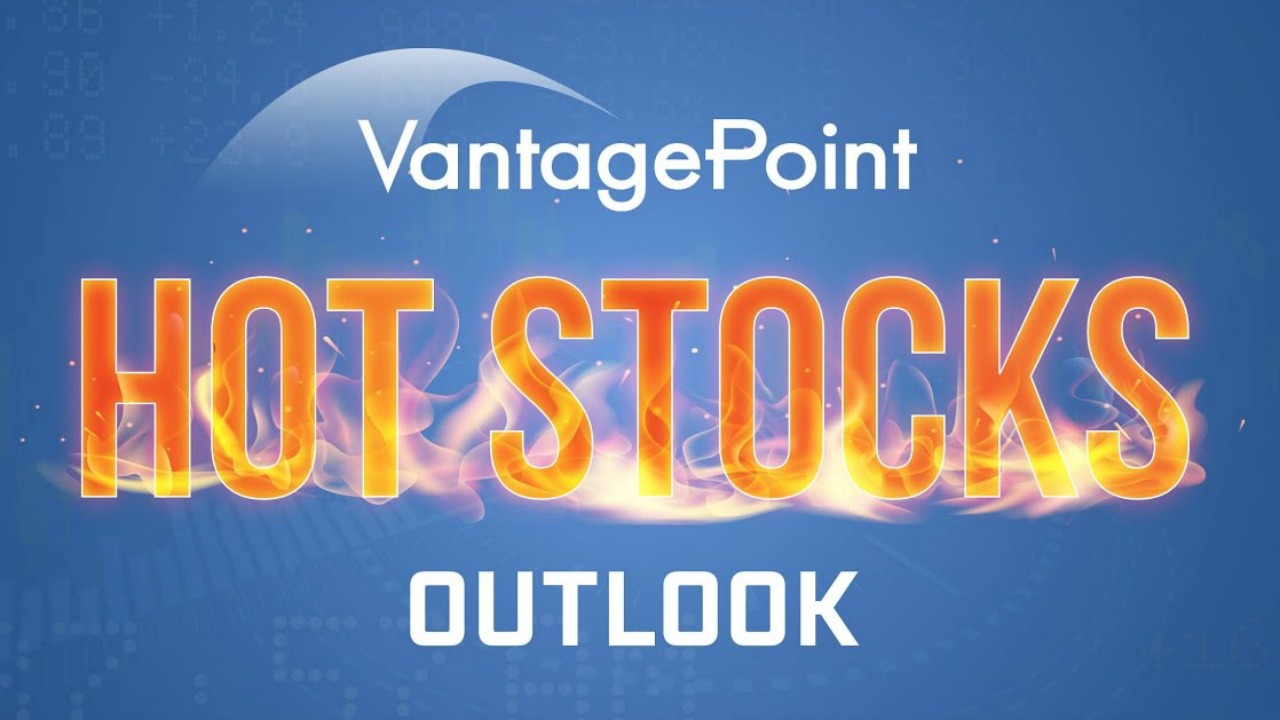Every Quarter, a lesser-known event shakes up the financial markets, stirring billions of dollars in trades and impacting portfolios around the globe: it’s called *Rank Day*. While it may not receive the fanfare of earnings reports or the scrutiny given to economic data releases, Rank Day is a key driver of market volatility. It’s the day when the major stock indexes — the S&P 500, NASDAQ-100, Russell 2000, and others — reassess which companies belong in their ranks, based on updated market capitalizations.
Stocks on the rise are added, while underperformers may find themselves removed, making way for fresh contenders. Rank Day is the quarterly event that reshapes the market’s landscape, impacting billions in investment capital and putting stocks under the spotlight.
Most traders and investors watch earnings and economic reports, looking for catalysts that might move the market. But Rank Day quietly reshapes portfolios, often triggering significant price swings as index funds and ETFs adjust to the new index lineup. This quarterly reevaluation process forces fund managers to either buy up shares of newly added stocks or sell off shares of those being removed, creating powerful waves of buying and selling pressure.
Understanding Rank Day is particularly crucial for traders and investors involved with ETFs and index funds. These funds are obligated to replicate the composition of their benchmark indexes, so when Rank Day occurs it is often accompanied by volatility. The *purpose* behind Rank Day is straightforward but powerful: ensure that indexes reflect the most relevant, high-performing stocks. This constant reevaluation means only companies with strong market performance or significant growth prospects remain in major indexes, while those that have fallen behind may face removal.
Take the S&P 500, for example. When Tesla ($TSLA) was finally added to the index in December 2020, it wasn’t just a nod to its tremendous market capitalization but a signal of its influence and staying power. Meanwhile, companies that no longer meet the criteria — either due to shrinking market cap or changes in financial performance — are removed.
Below is a 10-year monthly chart of $TESLA where I have highlighted when it was added to the S&P 500 Index because of the “Rank Day” and accompanying rebalancing process.
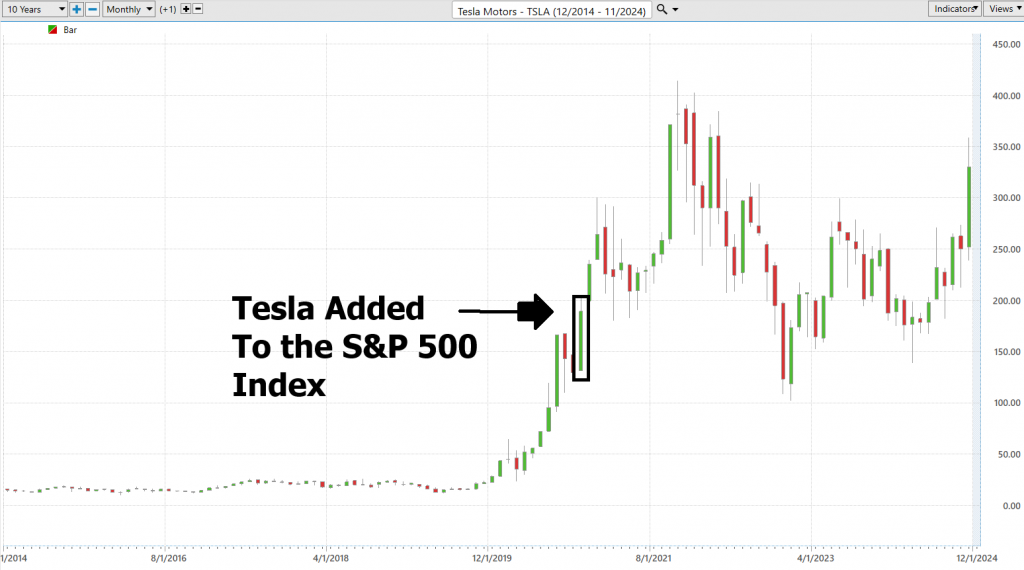
Rank Day is driven by major index providers like S&P Dow Jones Indices, MSCI (Morgan Stanley Capital International), Nasdaq, and FTSE Russell. These providers set the rules for each index’s composition, defining which stocks qualify for inclusion and under what circumstances. For example, the Nasdaq 100 Index, which emphasizes non-financial companies in tech-heavy industries, saw significant shifts in 2023 when Intel ($INTC) was replaced due to its sliding market cap. Nvidia ($NVDA), on the other hand, has been a classic example of a rising star in both the S&P 500 and the NASDAQ-100, solidifying its position with consistently strong growth and market valuation.
The reason that Rank Day is significant is because it raises your awareness of up and coming companies. Consider the Magnificent Seven, Microsoft, META, Amazon, Apple, Tesla, Nvidia and Alphabet were all once rising stars. Today they are titans.
These adjustments might seem like a quiet shuffle in the market, but the implications are anything but subtle. When Tesla was added to the S&P 500, its inclusion alone drove an estimated $80 billion in buying activity from funds tracking the index, creating a surge in its stock price. Likewise, Nvidia’s continued presence in the NASDAQ-100 keeps it on the radar of every ETF and index fund tracking that index, meaning that any change in its weighting can send ripple effects throughout the market.
Rank Day might not grab headlines, but for the funds and investors that track these indexes, it’s a pulse-check that keeps portfolios aligned with market reality.
How Rank Day Works
Rank Day isn’t a random reshuffling of stocks—it’s a systematic, rigorous review process handled by index committees, where every candidate and incumbent company is put under the microscope. Index providers like S&P Dow Jones, MSCI, and Nasdaq consider several factors to determine who makes the cut, who gets left behind, and who might move up or down the ranks. This ongoing re-evaluation process ensures that indexes stay relevant, reflective of the current market, and filled with companies that have the financial muscle to represent their industries.
On Rank Day, index committees assess stocks based on their latest market capitalizations and financial stability. Companies need to maintain specific market cap thresholds to remain in high-profile indexes like the S&P 500 or NASDAQ-100. Liquidity is another essential requirement; stocks need consistent trading volume to be eligible, ensuring they can be easily bought or sold by funds tracking the index. Additionally, companies must meet criteria related to profitability, financial performance, and sector alignment.
For example, a company might hold a high market cap, but if its liquidity or earnings dip, it risks dropping out.
Rank Day results in a few primary types of adjustments:
1. Additions: High-performing companies with rising market caps may earn a place in a prominent index.
2. Removals: Companies falling short in market cap or liquidity may be shown the door, as with Macy’s ($M), which exited the S&P 500 in 2020.
3. Reweighting: Even if a company remains in an index, its position might be adjusted. For example, in a year when Nvidia ($NVDA) outperformed most of its peers, its weighting within the NASDAQ-100 increased, making it more influential in the index’s overall performance.
These adjustments don’t happen in a vacuum; they create ripple effects throughout the market. Additions often drive stock prices up, as funds tracking the index must buy shares to replicate the new structure. Conversely, removals can spark a sell-off, as index funds reduce exposure to stocks that are no longer included.
Examples of Potential Rank Day Changes
While it’s speculative, a few companies are in positions that might warrant index rebalancing attention. Take Intel ($INTC) in the S&P 500. Its slipping market position due to stiff competition from AMD and Nvidia, combined with its market cap struggles, makes it a possible candidate for demotion.
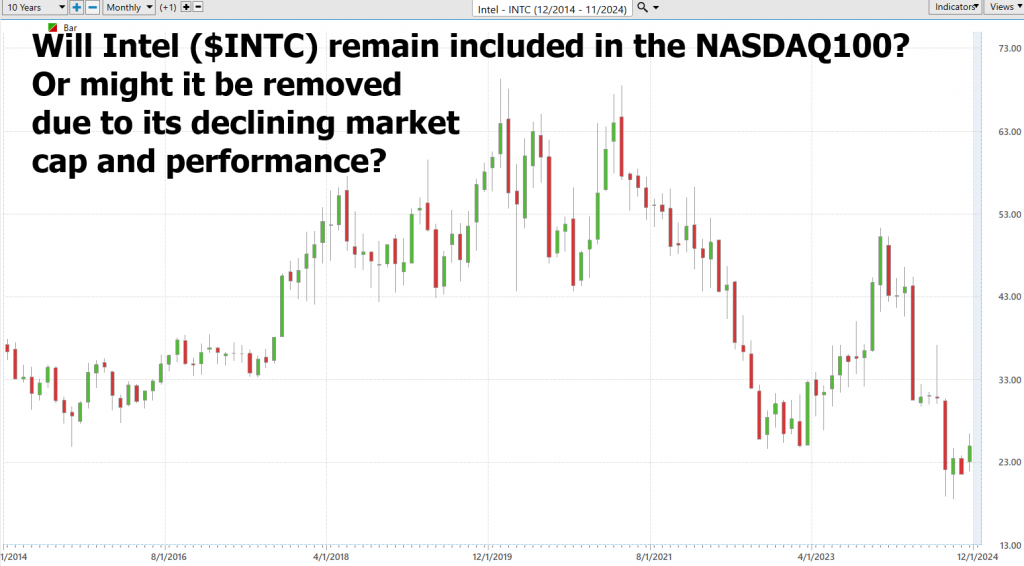
On the other hand, Palantir ($PLTR) has shown growth and increasing profitability, possibly positioning it for a NASDAQ100 debut should it sustain its performance. $PLTR is a component of the S&P 500 Index.
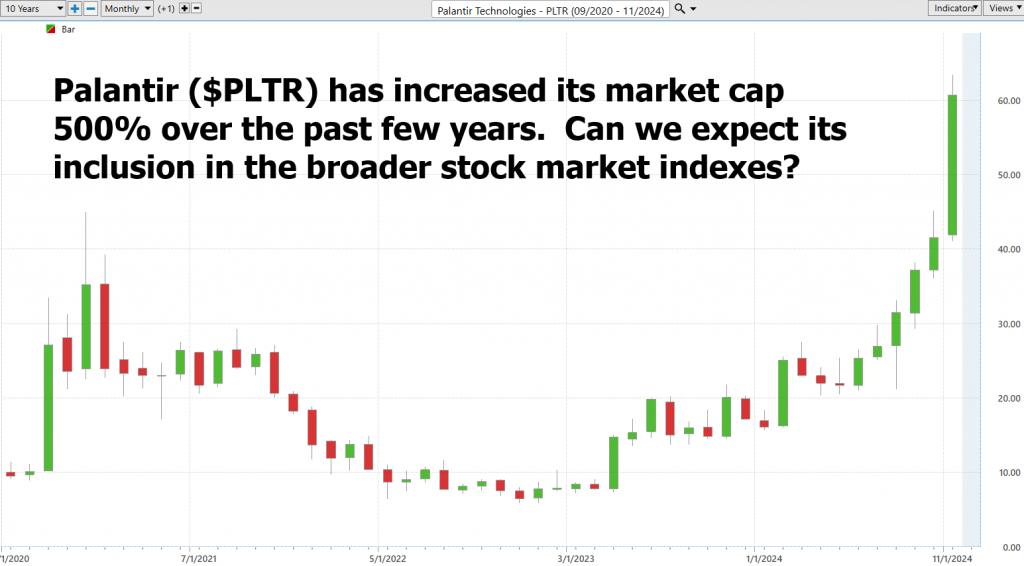
Another example is Snap ($SNAP), which faces pressure in the NASDAQ-100. While it was once a rising tech player, Snap’s revenue challenges and declining market cap make it a potential candidate for removal. In contrast, companies like Roku ($ROKU) and MicroStrategy ($MSTR), which have seen substantial growth and industry attention, might be positioned to move up and are ripe for inclusion.
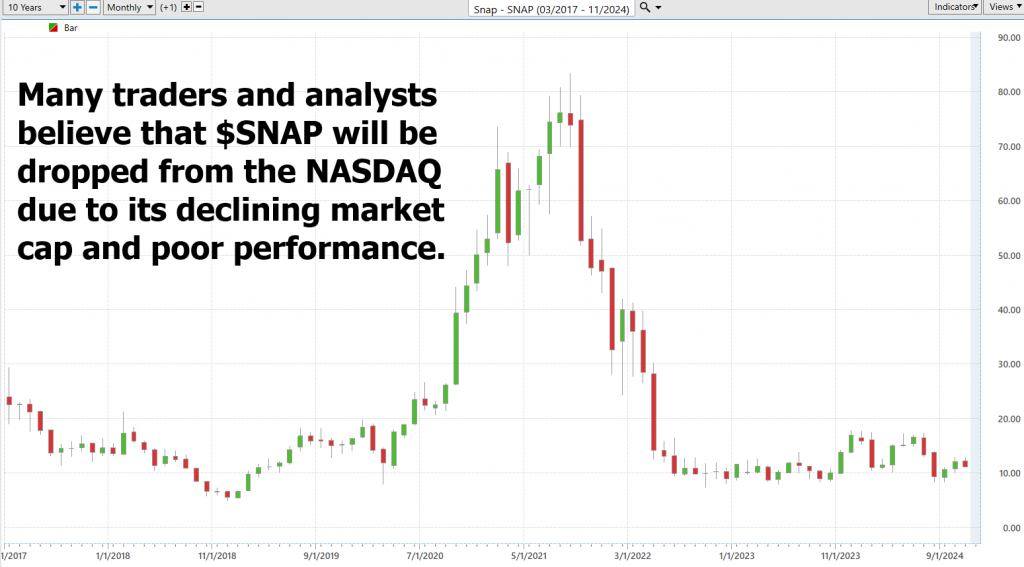
Market Impact of Rank Day Adjustments
Rank Day adjustments have real consequences for stock prices. When Tesla ($TSLA) was added to the S&P 500 in December 2020, the stock surged as ETFs and funds tracking the index scrambled to include it. Similarly, the removal of a long-standing stock like Macy’s from the S&P 500 signaled to the market that traditional retail was losing ground, and this perception shifted investor sentiment.
Rank Day serves as a barometer of market relevance, rewarding rising companies and signaling potential trouble for laggards. For traders and investors, it’s a quarterly reminder that the market is always in flux, with new players entering and others potentially bowing out.
The connection between Rank Day and quarterly rebalancing is like the shifting gears of an engine — unseen by most, but essential for smooth performance. While Rank Day identifies the stocks that enter or exit an index, quarterly rebalancing is the process by which fund managers adjust their holdings to mirror these updated index compositions. For index funds and ETFs, rebalancing is not optional; it’s a fundamental mandate that ensures they stay true to their respective indexes.
Rebalancing is the act of realigning an index’s weightings, ensuring that it reflects the changes determined on Rank Day. The process is designed to keep index funds accurately representing their benchmark index by either adding new stocks, removing underperforming ones, or adjusting the weightings of existing components based on shifts in market capitalization.
To understand rebalancing’s impact, consider this: every quarter, index funds must bring their portfolios in line with the revised structure. For companies added to the S&P 500 or NASDAQ-100, this means millions of shares being bought, often within a tight timeframe. Conversely, companies removed from an index face the opposite fate, as fund managers sell off shares to meet the new requirements, creating downward pressure on their stock.
Once Rank Day has redefined the index’s composition, rebalancing sets the gears in motion. For ETFs and index funds, this involves several key steps:
1. Aligning Holdings: Fund managers review the updated index composition and calculate the necessary adjustments.
2. Executing Trades: Buying and selling happen in waves, often with multiple funds executing trades simultaneously to replicate the revised structure.
3. Reweighting: Even if a company stays in the index, its share in the total pie might increase or decrease, creating shifts in demand for its stock.
This systematic buying and selling introduces a wave of market pressure. When high-profile stocks like Tesla ($TSLA) were added to the S&P 500, the rush of buying orders ahead of rebalancing pushed the stock higher, amplifying its market value and influence within the index. Meanwhile, stocks removed from an index face selling pressure that can result in sharp declines. This effect on prices isn’t a small-scale event — it involves millions, often billions, of dollars in trades.
Timing here is crucial. Fund managers are often required to complete these trades by a specific date, sometimes within just a few trading sessions. As rebalancing deadlines approach, the urgency to buy or sell increases, increasing the volatility for the stocks involved. This is why, as the rebalancing day nears, traders often see heightened volume and price fluctuations in affected stocks.
Rebalancing, in this way, is an undercurrent that moves billions of dollars and reshapes stock valuations—often in dramatic fashion. For the seasoned trader, understanding the timing and mechanics of rebalancing is not only a strategic advantage but also a window into how major indexes exert influence over individual stocks. Understanding the magnitude of these changes and their ripple effects can offer profound insights into market dynamics and opportunities for astute investors.
Globally, indexed assets under management (AUM) have soared, with more than $11 trillion estimated in ETFs and index funds that mirror indices such as the S&P 500, NASDAQ-100, and Russell 2000. Rank Day adjustments force these funds to align their holdings with the updated index compositions, triggering substantial trading activity.
- S&P 500: This index is particularly significant, with ETFs like the SPDR S&P 500 ETF Trust (SPY) managing assets upwards of $350 billion. When Rank Day mandates changes, the sheer volume of assets necessitates large-scale buying or selling of the constituent stocks.
- NASDAQ-100: Home to tech giants, this index sees major movements especially with shifts involving high-market-cap companies like Apple and Amazon. The Invesco QQQ Trust, which tracks the NASDAQ-100, manages about $150 billion in assets.
- Russell 2000: Known for encapsulating a broad swath of small-cap U.S. stocks, changes in this index can significantly impact the liquidity and market performance of its members. The iShares Russell 2000 ETF, for instance, involves tens of billions in assets needing rebalancing.
Rebalancing can inject notable volatility into the market. This stems from the significant volumes of stocks being bought or sold as funds re-align their portfolios. During Rank Day periods, particularly when major companies are added or removed, the resulting buy and sell orders can lead to notable price fluctuations and increased trading volumes.
For traders, Rank Day presents a cornucopia of opportunities to capitalize on price movements. As stocks are added to or removed from indices, their price can experience significant swings due to the sudden surge or drop in demand. Traders can leverage these movements by anticipating additions or exclusions and positioning their trades accordingly.
For long-term investors, especially those heavily invested in index funds, Rank Day recalibrations can influence the risk/return profile of their portfolios. Adjustments in the index composition can shift exposure from one sector or risk category to another, potentially aligning the portfolio more closely with market growth areas or inadvertently increasing exposure to declining sectors.
Key Dates for Rank Day and Quarterly Rebalancing
$QQQ Rank Day is November 29, 2024
Deletion or Addition Announcements for $QQQ is December 13, 2024
Rebalancing $QQQ December 20, 2024
A NASDAQ calendar for ranking and rebalancing can be accessed here.
As we look forward to 2025, it is crucial for every trader and investor to mark their calendars with the key dates for Rank Day and quarterly rebalancing. These dates are pivotal, as they dictate the rhythm of market movements and offer a structured timeline for those looking to capitalize on or adjust to the changes within major market indexes such as the MSCI, S&P, NASDAQ, and FTSE Russell.
- MSCI: Traditionally, MSCI rebalancing occurs on the last day of February, May, August, and November. For 2025, these dates will likely be February 28, May 31, August 31, and November 30.
- S&P 500: The S&P 500 typically sees its quarterly rebalances effective after the close of trading on the third Friday of March, June, September, and December. This makes the critical dates March 21, June 20, September 19, and December 19.
- NASDAQ: Similar to the S&P, NASDAQ-100 adjustments are typically scheduled to take effect on the third Friday of the final month of each quarter. The dates to watch are March 21, June 20, September 19, and December 19.
- FTSE Russell: The FTSE Russell is a bit different, with its primary annual reconstitution taking place in June, and interim updates occurring quarterly. For 2025, the major reconstitution date is set for June 27, with other adjustments occurring around the third Friday of the remaining quarters.
These dates are not merely administrative markers; they are critical for planning trades and adjusting portfolios. The anticipation of rebalancing can drive significant market movements as institutional investors adjust their holdings to align with updated index compositions. For savvy traders, these periods can represent crucial windows of opportunity for strategic trading decisions.
To navigate these turbulent periods successfully, traders should consider the following checklist:
- Stay Informed: Keep abreast of potential changes in index compositions as early as possible. Financial news outlets, index provider announcements, and market analysis can provide early indications of major shifts.
- Assess Portfolio Alignment: Evaluate how your portfolio might be impacted by the expected changes. This includes identifying holdings that might be added or dropped from indexes.
- Consult VantagePoint’s A.I.: Use VantagePoint’s predictive indicators, neural networks, and intermarket analysis to confirm daily price movements and forecasted trends to stay ahead of the curve.
- Set Strategic Alerts: Use trading platforms to set alerts on stocks likely to experience significant volatility due to index rebalancing. This helps with capitalizing on quick price movements.
- Liquidity Planning: Ensure there is sufficient liquidity in your portfolio to make quick adjustments around the rebalancing dates. This could mean setting aside cash to take advantage of buying opportunities or to cover sales.
- Risk Management: Consider protective measures such as stop-loss orders to safeguard against unwanted losses during periods of heightened volatility.
- Post-Rebalancing Review: After the rebalancing has occurred, review the new compositions and performance of the indexes and review VantagePoint’s artificial intelligence forecasts. Adjust your trading strategies and portfolio allocations based on the new market landscape.
By marking these dates and preparing adequately, traders can position themselves to not just survive but thrive through the Rank Day and quarterly rebalancing process. This is a time to be vigilant, proactive, and ready to act on the opportunities that the market provides.
Rank Day can mirror the volatility seen during earnings seasons or economic data releases, though the mechanisms differ. Unlike earnings, which reflect a company’s financial health, or economic reports that signal macroeconomic trends, Rank Day volatility stems from structural index changes impacting supply and demand dynamics in the stock market.
The key takeaway is that you need to be aware of what is being added and deleted from the major market indexes. There is tremendous risk of continuing to own stocks that are being deleted from the index and conversely there is huge opportunity to own stocks that are being added to the indexes.
We will be watching Rank Day very closely in the weeks ahead and would advise you to pay very closely to the announcements in December.
In the unpredictable whirlwind of 2024, where volatility isn’t just a term but our constant companion, the key to thriving is proactive engagement, not passive hope. You cannot afford to simply watch from the sidelines, wishing for stability. As I’ve detailed in this article, we are wrestling with unprecedented market twists, fueled by spiraling debts and relentless currency erosion.
Today’s financial decision-making arena is laden with intricacies that mock traditional wisdom. This is no time for idle hopes—it’s time to arm yourself with the sharpest tools available, such as artificial intelligence in trading.
A.I. systems and neural networks, masters of processing immense datasets to extract valuable insights, are indispensable for navigating these stormy economic seas. Consider your own experiences post-Great Financial Crisis: Does your portfolio’s growth shadow the Dow’s impressive 410% rise?
Don’t just linger, waiting on the Federal Reserve’s next uncertain step. Equip yourself with the elite intelligence only A.I. trading software can offer. Think about it—if A.I. can outplay humans in chess, poker, Jeopardy, and Go, isn’t it time to acknowledge its potential in trading?
Securing your financial future demands strategic asset positioning today.
Knowledge is power, indeed, and A.I. is the master key. It’s your gateway to harnessing this power effectively to fortify and advance your financial status. So, step up and make those informed, astute moves. Your wallet will be grateful. Join us for a FREE Live Training.
We’re excited to showcase at least three stocks pinpointed by A.I. that are on the brink of significant movements… and remember, in the trading world, movement means opportunity!
Discover why more and more professional traders are turning to artificial intelligence for lower risks, higher rewards, and ultimate peace of mind.
Curious?
Come see A.I. in action at our Next Live Complimentary Class.
See firsthand why artificial intelligence is the top choice for pros who prioritize reduced risk, maximized rewards, and peace of mind.
Let’s Be Careful out there.
It’s not magic.
It’s machine learning.
THERE IS A SUBSTANTIAL RISK OF LOSS ASSOCIATED WITH TRADING. ONLY RISK CAPITAL SHOULD BE USED TO TRADE. TRADING STOCKS, FUTURES, OPTIONS, FOREX, AND ETFs IS NOT SUITABLE FOR EVERYONE.IMPORTANT NOTICE!
DISCLAIMER: STOCKS, FUTURES, OPTIONS, ETFs AND CURRENCY TRADING ALL HAVE LARGE POTENTIAL REWARDS, BUT THEY ALSO HAVE LARGE POTENTIAL RISK. YOU MUST BE AWARE OF THE RISKS AND BE WILLING TO ACCEPT THEM IN ORDER TO INVEST IN THESE MARKETS. DON’T TRADE WITH MONEY YOU CAN’T AFFORD TO LOSE. THIS ARTICLE AND WEBSITE IS NEITHER A SOLICITATION NOR AN OFFER TO BUY/SELL FUTURES, OPTIONS, STOCKS, OR CURRENCIES. NO REPRESENTATION IS BEING MADE THAT ANY ACCOUNT WILL OR IS LIKELY TO ACHIEVE PROFITS OR LOSSES SIMILAR TO THOSE DISCUSSED ON THIS ARTICLE OR WEBSITE. THE PAST PERFORMANCE OF ANY TRADING SYSTEM OR METHODOLOGY IS NOT NECESSARILY INDICATIVE OF FUTURE RESULTS. CFTC RULE 4.41 – HYPOTHETICAL OR SIMULATED PERFORMANCE RESULTS HAVE CERTAIN LIMITATIONS. UNLIKE AN ACTUAL PERFORMANCE RECORD, SIMULATED RESULTS DO NOT REPRESENT ACTUAL TRADING. ALSO, SINCE THE TRADES HAVE NOT BEEN EXECUTED, THE RESULTS MAY HAVE UNDER-OR-OVER COMPENSATED FOR THE IMPACT, IF ANY, OF CERTAIN MARKET FACTORS, SUCH AS LACK OF LIQUIDITY. SIMULATED TRADING PROGRAMS IN GENERAL ARE ALSO SUBJECT TO THE FACT THAT THEY ARE DESIGNED WITH THE BENEFIT OF HINDSIGHT. NO REPRESENTATION IS BEING MADE THAT ANY ACCOUNT WILL OR IS LIKELY TO ACHIEVE PROFIT OR LOSSES SIMILAR TO THOSE SHOWN.










